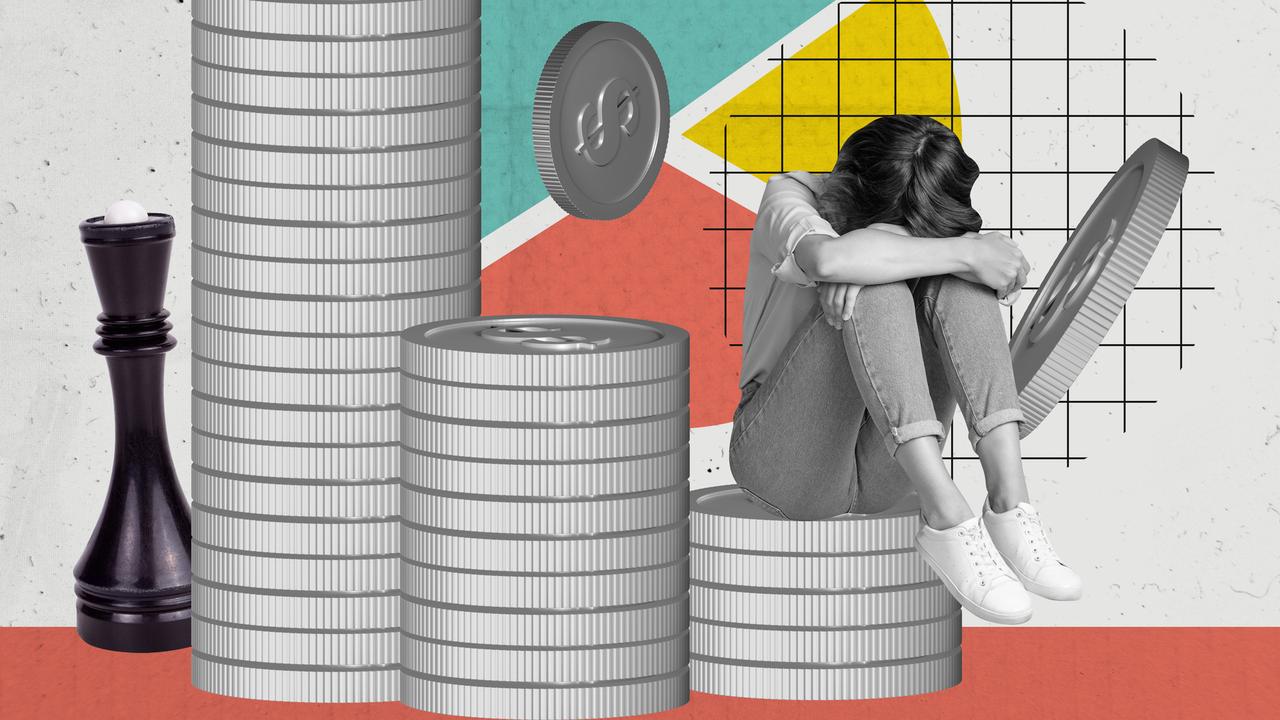Dollar dazzlers: The best places to put your money in 2017
CHOOSING where to invest may appear more confusing than ever, but Aussies can still reap financial rewards if they pick the right asset.
Investing
Don't miss out on the headlines from Investing. Followed categories will be added to My News.
CHOOSING where to put your money in 2017 appears more confusing than ever.
House price growth varies widely between cities, bank deposits are paying a paltry 2 per cent, and the recent share market rally raises the risk of more volatility in financial markets.
However, the best place for your money in 2017 may not be a traditional investment. We are in a low-growth world, and gone are the days of 7 per cent term deposit interest rates and share markets climbing 10-15 per cent a year.
Financial specialists say debt repayment, superannuation and insurance strategies might deliver bigger benefits, and a person’s age is a key factor in determining where their money should go.
Here are some of their suggestions for 2017, based on five key life stages.

STUDENTS AND YOUNG SINGLES
Start saving 10 per cent of any income you earn. It doesn’t matter if it’s for a car, holiday or house deposit — it will pay huge dividends later in life, according to financial strategist Theo Marinis. “Get into the habit of not spending everything you earn — it’s a good discipline,” he said.
Temptation can lead many young people into crippling debt, so avoid credit cards where possible, and make paying off credit card debt a top priority. Most investment returns are forecast to be between 2 and 10 per cent in 2017, so it’s pointless putting money into an investment if you are losing 20 per cent a year on credit card interest.
Student loans don’t need to be paid of quickly by young people as their interest rate is much lower than other debt.
Take an early interest in superannuation. Avoid having multiple funds charging multiple fees, and make sure your super is invested mainly in high-growth assets that will grow the strongest over a 40-50 year working life.

YOUNG COUPLES
Two incomes can work well together saving for a house deposit and preparing for family life, and there may even be some scope to become an investor.
Would-be property investors must research the house price history and outlook in their area, and shares should only be bought with a long-term time frame of seven to 10 years. Share and property investments should not be used as part of a three-year plan to save a home deposit, because they are too volatile.
“The secret to investing, whether it’s inside or outside super, is compound interest. It makes a massive, massive difference,” Mr Marinis said. Reinvesting income multiplies wealth over time.
Young couples should start life insurance and private health insurance policies by age 30. Life cover and income protection are much cheaper for those who are young and healthy, and private health insurance penalties can affect people over 31.
BDO Private Wealth partner Tony Simmons said young couples aiming to have children later should aim to put one partner’s wage aside as an experiment to see how they could survive on one income.

FAMILIES WITH CHILDREN
Life insurance is vital at this stage of life, and often can be bought through superannuation where the cost of premiums does not come out of your hip pocket.
“Think more about life insurance so that debts are covered and the children can be educated. A non-working spouse needs life insurance as well,” Mr Simmons said.
This is the most expensive time of most peoples’ lives as housing, education and other child-related costs seemingly suck away every spare dollar, but experts say it’s also a great time to pump a little extra into superannuation.
New super rules starting in July mean that it is unwise to delay making extra super contribution until your late 50s, so consider salary sacrificing a small amount every pay packet. This also lowers your tax costs because super contributions are taxed at just 15 per cent rather than marginal tax rates of up to 50 per cent.
Salary sacrifice makes savings automatic, and families can also look at automatic transfers to dedicated savings accounts before they have the chance to spend. Research this month by financial services group ME found that just one-in-five households had set up automatic transfers to savings accounts.
ME head of deposits Nic Emery said another key to getting ahead financially was to track all household expenses and set a realistic budget. Almost anyone who writes down all their spending is likely to find unnecessary fat that can be trimmed.

EMPTY NESTERS
The true empty nester — a pre-retiree whose adult children have gone — is a shrinking species as more kids hang around home into their 30s.
Mr Simmons said today’s empty nesters were older than the previous generation. Many also have a mortgage as they approach age 60, and this should be a priority to pay off.
“Get rid of non-deductible (non-investment) debt and don’t get too defensive with investments,” Mr Simmons said.
“Aim to retire without personal debt and with a reasonable superannuation balance.”
The best thing an empty nester could buy in 2017 might be some independent financial advice. Constant government rule changes make it near-impossible for an average person to understand what is best to do, and tax-saving strategies such as transition to retirement can still work.
Use free compound interest calculators and superannuation tools on websites such as moneysmart.gov.au to get an idea how much you will have in retirement. Choosing some higher-risk and higher-return investments or even working a couple of years longer can make a big difference to the final size of a nest egg.
Forget the old saying that you need $1 million to retire comfortably. The actual figure for a couple is $640,000, which the Association of Superannuation Funds of Australia says will deliver almost $60,000 a year when combined with a part age pension.

RETIREES
Most Australians retire with the above super/pension combination. Tougher new age pension assets test rules — to kick in on January 1 — only affect about 10 per cent of retirees.
Advisers said a big danger for retirees was being too conservative with their investments, such as sticking every dollar in a cash savings account earning just 2 per cent.
Mr Simmons said someone in their 60s should still aim to have at least half their money invested in growth assets such as property and shares, and own “a good blend of diversified asset classes”.
Mr Marinis said longer lifespans and low interest rates meant many retirees needed to think beyond the safety of cash in the bank, because growth assets performed better over 10-year periods.
“If there’s a couple of 65 year olds sitting in front of me, there’s about a 90 per cent probability that at least one of them will get to 90,” Mr Marinis said.
“Cash earning 2 per cent might help you sleep better at night, but you will run out of money a lot quicker than someone who might have got 7 per cent this year.”
2017 FORECAST INVESTMENT RETURNS
Bank deposits 2%
House prices 4%
Aussie shares 9%
Global shares 9%
Property trusts 5%
Infrastructure 10%
Bonds 2%
Balanced super fund 7%
Source: AMP Capital
Originally published as Dollar dazzlers: The best places to put your money in 2017


